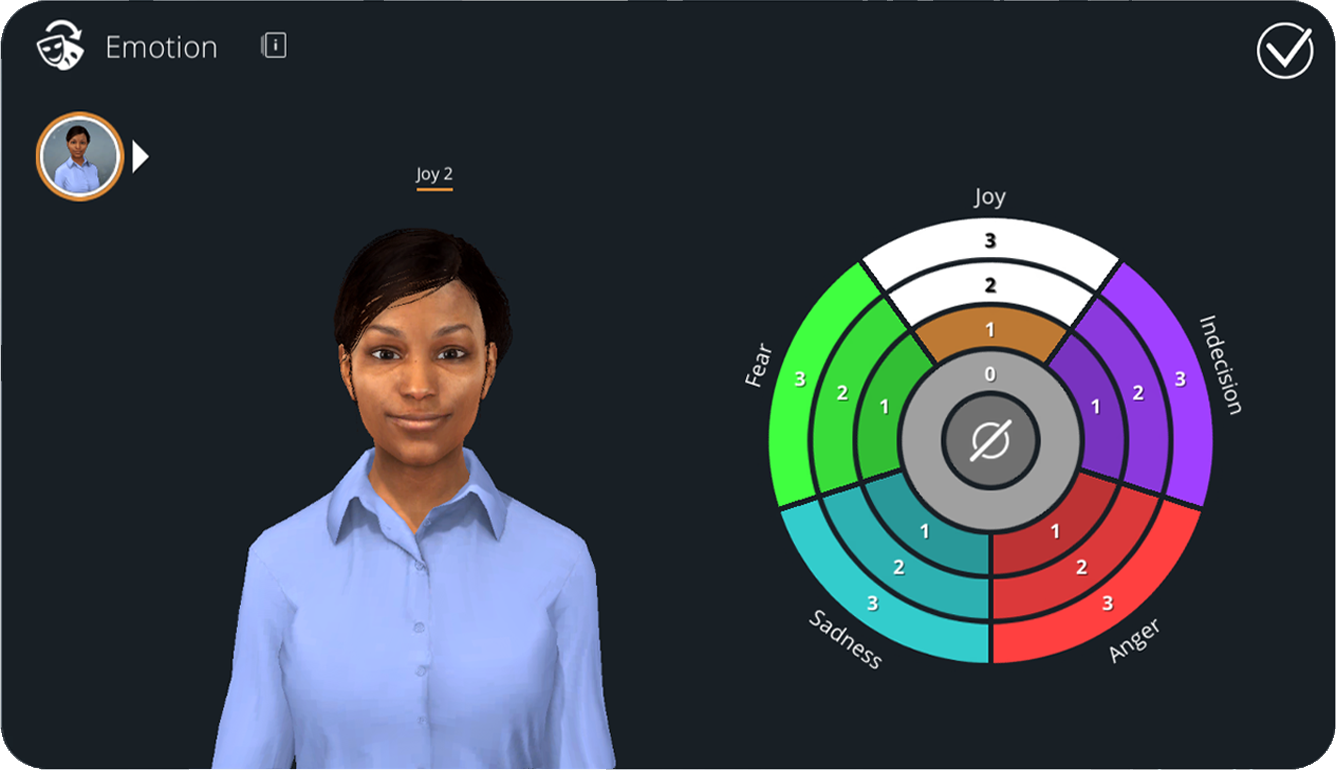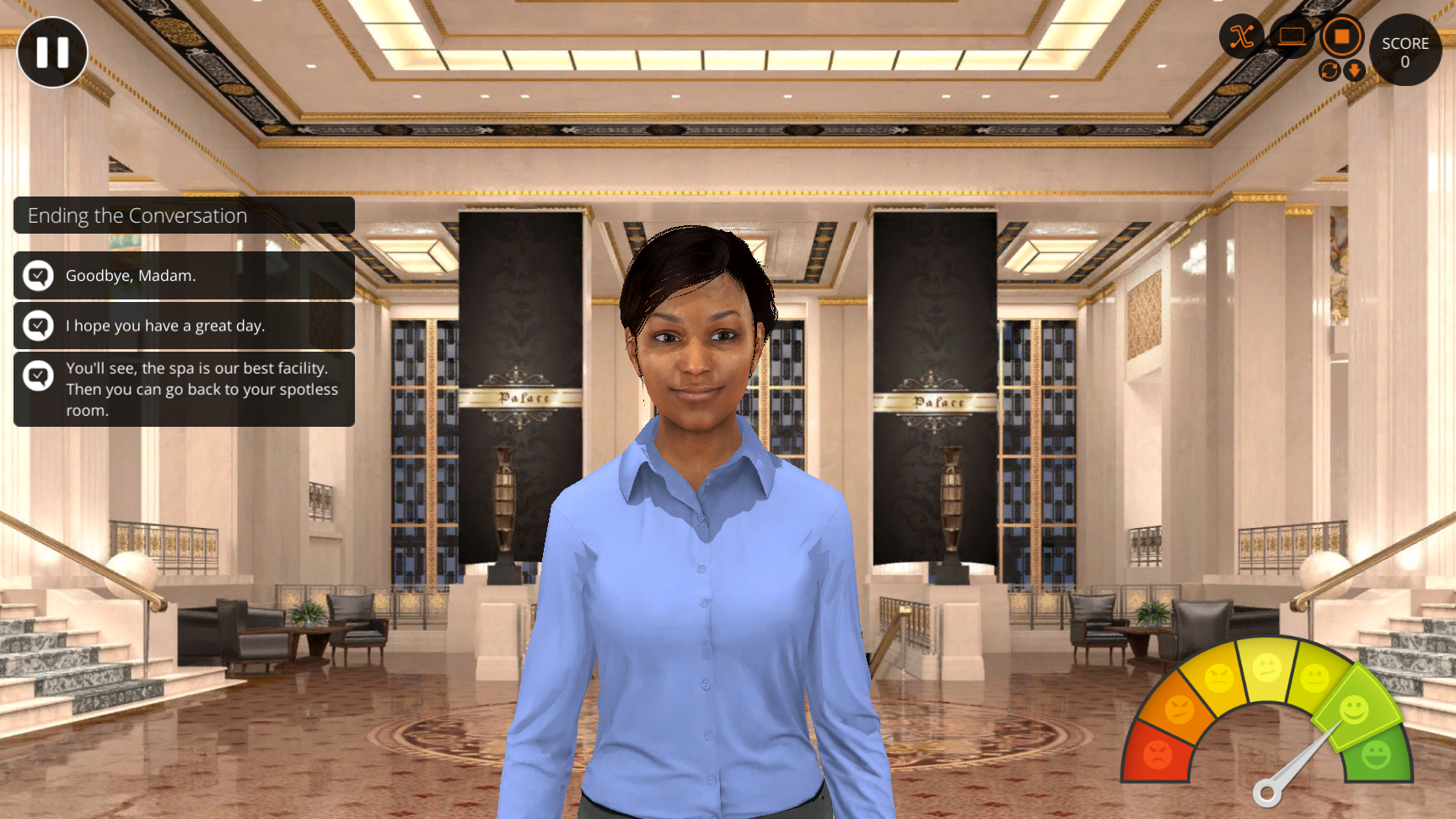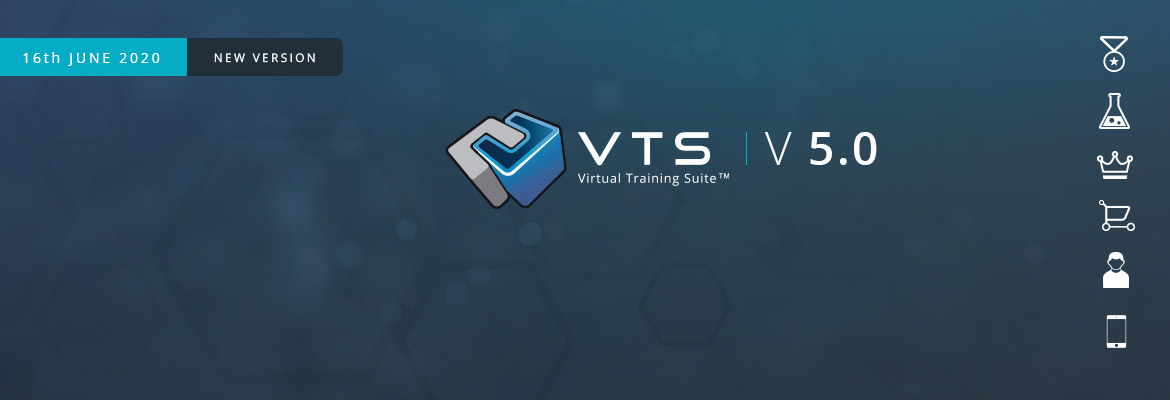The importance of emotions in a learning scenario
Emotions are part of non-verbal communication, just like body movements. They can sometimes convey feelings that would be difficult to express otherwise. Emotions are transmitted by the situations experienced or observed by people thanks to the empathic link that we will develop with them: seeing a sad person will bring us a feeling of loneliness, a happy person will brighten the moment, or even an angry person can instill fear in others.
Emotions are not only reflected in the face, they are also accompanied by bodily movements as well as associated voice tones that make them more easily distinct and recognizable. All means are good to achieve the primary objective: to communicate. Emotions serve above all to make our state of mind visible to others so that their speech or actions resonate with it. Because of this, emotions are a great way to develop an affinity with a virtual character. This empathy developed with the characters whose story we follow attaches us and takes us into their universe, making us share the same joys, dilemmas and anxieties. This is how cinema works in particular, which is not so far from the immersive digital training offered by a solution like VTS Editor.
These means of communication are very useful and must all be coordinated to convey the right emotions to the recipient. If speech does not follow body movements or facial expressions, the messages sent by these signals will be contradictory and the whole thing will be confused, which will inevitably lead to a drop in the learner’s attention. Here is how we orchestrate all this in VTS Editor.
The impact on the characters
A. The Wheel of Emotions
We have identified 5 major emotions from which the majority of other emotions derive: joy, anger, sadness, fear and indecision. There are a few additional ones such as disgust, which only has a moderate impact in the field of formation, surprise which is very close to fear and joy but which is a fleeting event, or shame.

These emotions have been broken down into 3 levels ranging from least to most pronounced, which will not only have an impact on facial expressions, but also on body movements.
Level 1: the line is very weak and shows a tendency to move towards this feeling.
Level 2: the line is marked and the emotion is clearly visible.
Level 3: the line is exaggerated, for extreme cases, and is mainly used on an ad hoc basis before descending to level 2.
This “wheel of emotions”, which you can find in different blocks of VTS Editor in order to define the emotions of the characters in a given situation, also has two additional levels. Level “0” represents the Neutral state and the face does not show any emotion. The central level “Ø” means that the character’s emotion will not be modified. He will keep the same mindset. This is very useful in multi-branching scenarios.
B. facial expressions

These levels can be used to scale the character’s emotion. For example, in the case of a scenario about customer satisfaction, the right answers could increase their joy, and the wrong answers decrease them, or even increase their anger or sadness. This would have the consequence of developing in the learner a “reward path” which will help him to get involved in order to find the best possible reaction from his interlocutor. This gradation also makes it possible to bring a more natural effect to the transition of a character towards this emotion. All of this obviously needs to be configured by taking advantage of the dynamic preview feature of his scenario in VTS Editor, to have a direct view of what the learner will be able to experience as sensations during the course of his learning scenario.

Our client Kahler Communication France, for example, chose VTS Editor as a solution to raise awareness among its trainers and coaches about the Process Communication Model®. The project then reflects the 6 Personality Types defined by the model: Thinker, Promoter, Persevering, Empathetic, Energizer and Imaginer, by translating them both through the verbal and non-verbal communications that are characteristic of them, in particular via the emotions of the characters used in the different scenarios. You will find more information on this subject via the Case study.
C. body movements
Beyond faces, level 2 and 3 emotions will also modify the character’s bodily attitude. His gestures will be modified to best adapt to his current state of mind. Thus, an angry character will have larger gestures and more aggressive waiting postures, while a sad person will more easily lower their shoulders or hold their arm in a sign of self-defense.
These movements may sometimes not be necessary. If the scenario does not lend itself to this and only contains fleeting emotions, for example to highlight a specific moment, these bodily movements may not have any particular impact. This is why we have provided you with two tools that allow you to manage these particular animations. In the settings of your VTS Editor project, we have added an option that allows you to define whether so-called “emotional” body animations should be used or not. If this option is unchecked, the character will keep their movements corresponding to the Neutral emotion, regardless of their facial expression.
The Animation block, on the other hand, allows the designer to choose more specific movements to better support the character’s speech at a specific moment. This block does not only contain specific animations with specific movements, but also all animations that are used in emotive animations.

Animations are split into “Wait” and “Speak” actions, and can be filtered by Emotion. Note that some emotions can be very related, such as anger and joy which have larger movements than normal, or indecisiveness and sadness which offer more neutral and poised movements. As such, movements of anger may be just right for a facial expression of joy, and vice versa.
The use of emotions in VTS Editor
Emotions must be assigned by the instructional designer throughout the scenario in his scripting graph, in order to best fit his story. For this, several blocks have the particularity of managing these emotions. First of all, the Emotion block allows you to define the state of mind of all the characters present in the scene at once. Each character can have a different setting. These emotions will therefore define their facial expressions and, if the option that allows emotive animations is activated, their gestures.
To simplify writing, emotion management has also been added to each place a character will speak. The Speak block and Choice of Phrases therefore include in their editing window a means of modifying the emotion of the character concerned, until another block changes its state again.

In general, too much or too little emotion is noticeable when testing your scenarios thanks to the Preview mode offered by VTS Editor. You can then adjust the level of emotion to better match the current atmosphere of the scene and thus better develop the empathy that the learner will feel.
An emotion well used in a scenario has the advantage of diversifying the feedback that the learner can receive. He will instantly know what impact his choices have had on the characters and the flow of the story. This feedback is essential in a formation so that the player can position himself and know if what he has done is right or wrong, so that he can learn from his mistakes. In this case, it is advisable to offer a remediation sequence to the learner, in order to debrief him on what went wrong, why, and what he should have done in such a situation to better cope with it to go out.
Emotions are not necessarily only related to 3D characters. VTS Editor also allows, through the use of graphic blocks such as Hotspots, to include characters or mascots as images. With these images, the emotions available to you are limited only by the imagination of the designer and the needs of the storyline.

In conclusion
Thanks to its management of emotions, VTS Editor represents a powerful tool for carrying out training in behavioral or soft-skills areas, or for telling a memorable virtual story, which transmits emotions and embarks the learner in a universe where he can increase in skills, because truly involved, committed and present. This emotional involvement of the learner will have a strong impact on his propensity to retain the main information that this medium aims to transmit.
You can experience all these features by downloading the trial version of VTS Editor software by following this link: Download VTS Editor trial version.










